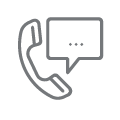
There has been much debate recently in the media about the use of oximeters to detect COVID-19 and you may have had patients already ask you about the accuracy of this device in detecting coronavirus.
Of course, as a GP, you want to be able to advise your patients in the best way possible and where able, want them to help them diagnose any health concerns over the phone or via video messaging rather than in person to help safeguard them further.
However, with some doctors saying everyone should have one of these handy devices just in case and others being sceptical of their value, what should you be advising your patients to do?
Keep reading to find out.
What is an oximeter?
A compact device that every GP should carry in their doctor’s bag, Finger Pulse Oximeters clip onto the finger and monitor oxygen levels in the blood. Although commonly used in clinical settings, they are extremely useful for people with respiratory problems and are also often used by athletes and pilots who need to monitor their blood oxygen levels regularly.
A normal oxygen reading is between 95 and 100%, with anything under 90 being considered unhealthy. Patients suffering with COVID19 have had measurements as low as 50%, even in those who were not experiencing breathing difficulties. This is a condition known as silent hypoxemia or “happy hypoxia”. This is because coronavirus attacks the lungs in such as way that a patient slowly gets less and less oxygen overtime and therefore, has time to adjust to these dangerously low levels.
Can a pulse oximeter be used to diagnose COVID-19?
Although there has been a lot of confusion over this, the simple answer is no. Yes, this device can be used to flag up issues with blood oxygen levels but it cannot categorically state whether a patient has coronavirus or not.
According to Londonwide LMCs, a representative committee of NHS GPs in London: “Pulse oximetry can be a useful aid to clinical decision-making but it is not a substitute for a clinical assessment, nor sufficient for diagnosis by itself.”
That being said, if your patients are after peace of mind, there is nothing wrong with suggesting that they buy an oximeter to test their oxygen levels as a precaution, as long as they are fully aware that guidance from a medical professional is also needed if their results show an issue. This especially true for elderly people who are much more a risk of becoming seriously ill from this deadly disease.
It is also worth noting that due to media speculation, the demand for pulse oximeters has surged and therefore, your patients must be weary of unscrupulous sellers that are selling these devices at inflated prices or without proper certification.
How can I ensure my patients use this device safely?
As well as making sure that they purchase a finger pulse oximeter from a reputable manufacturer, you also need to ensure that they are using the device safely and effectively.
In order to ensure your patients yield the best results from their oximeter, advise the following:
- Keep the device held steady in place for 30 seconds. Any movement or poor placement can result in an inaccurate reading.
- Do not wear nail polish or false nails as this can block light from the device and affect the reading.
- Explain that certain medical conditions can result in an inaccurate reading. These include anaemia and Raynaud’s syndrome.
- Choose an oximeter that uses the latest technology to ensure the quality of the LED diodes, photo detectors and electronics.
Can a fitness track work as a pulse oximeter?
You may also have had some patients ask about whether or not they can use their fitness trackers or smart watches to detect COVID-19 rather than having to invest in a finger pulse oximeter.
Although some of these devices do have a pulse oximetry feature, these are created for recreational use rather than for medical purposes and therefore, should not be relied upon to detect COVID-19 or to accurately measure blood oxygen levels. In conclusion, there is nothing wrong with a patient deciding to purchase a finger pulse oximeter to test their blood oxygen levels.
That being said, they need to be aware of false readings, both low and high, as well as the inappropriate over-reliance on a single number rather than an overall assessment of their health and wellbeing.
A finger pulse oximeter can offer peace of mind for patients who are suffering with anxiety surrounding the current pandemic but should categorically not be a substitute for proper testing and assessment.


















